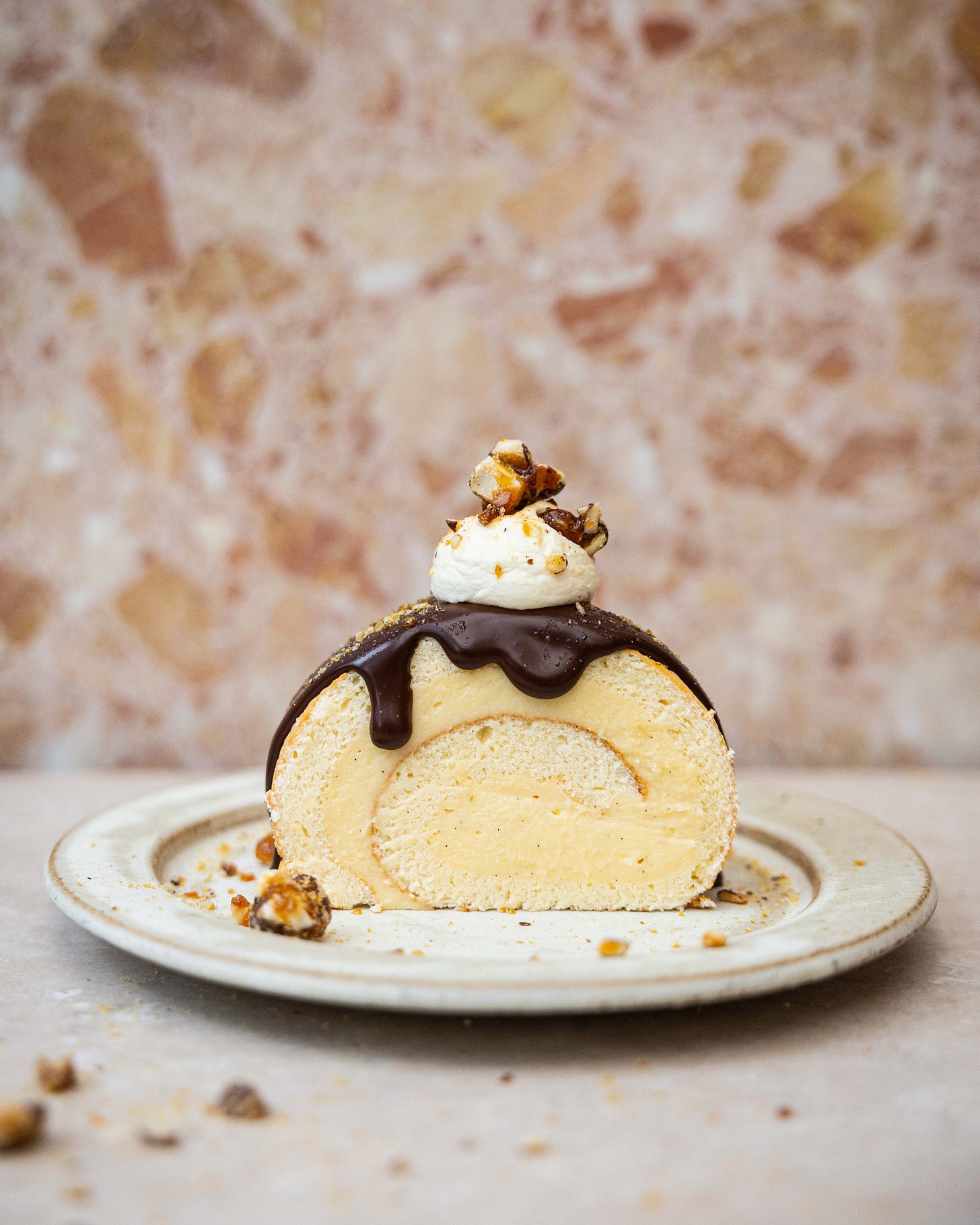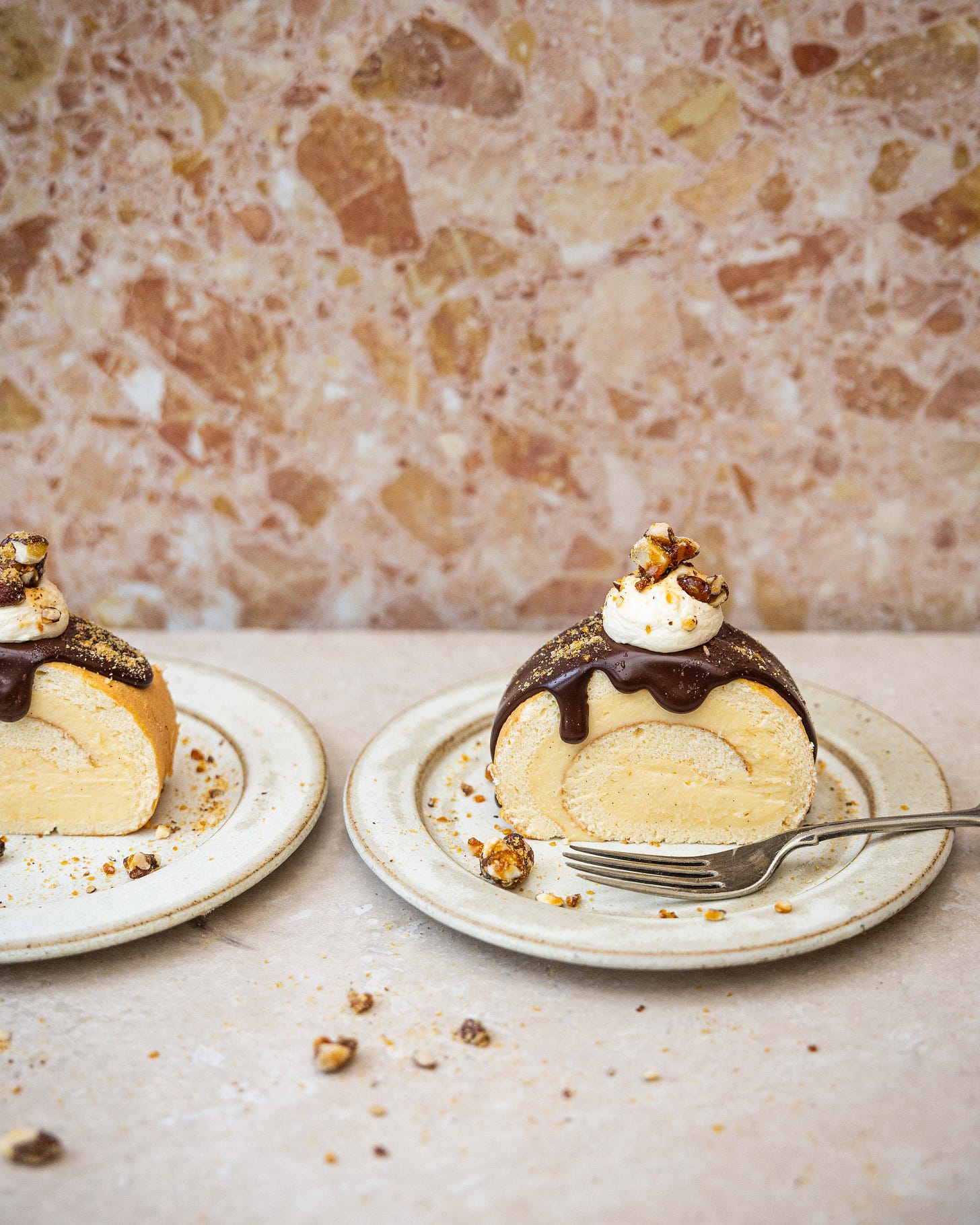🎉 Welcome to my newsletter, The Boy Who Bakes, a subscriber-supported newsletter, dedicated to all things baked. For more bonus posts, filled with exclusive recipes just like this one, you can become a paid subscriber for the weekly newsletter, Second Helpings. It costs just £5 a month and, as well as the weekly recipes, that also unlocks access to the full archive of past recipes. To subscribe, to either the paid or free newsletter, click the link below.🎉
You may have read the title of this newsletter and wondered, is Edd okay? I have promised you a pie but this weeks recipe is very clearly a cake? Surely, someone who has written about baking for almost 15 years, knows the difference between cake and pie? The confusion is absolutely warranted but, the name is oddly correct, this cake is actually referred to as a pie, as odd as that sounds. Why, well that’s a very different question.
Boston Cream Pie is a classic American recipe, one that can supposedly find its roots back in 1856 at the Parker House Hotel in, where else, Boston. The cake wasn't exactly invented at this point in time, very similar recipes existed before, cakes such as the Washington Cake and, even more confusingly, The American Pudding-Cake Pie. Catchy names were clearly of no concern back then, today that would become something like the PuCaPie, and it would instantly go viral on TikTok. But from the day that the Boston hotel opened its doors, they have served their version of the cake, and from then on it became known as the Boston Cream Pie, and for some reason that is the name that stuck. If only PuCaPie had been the one. But why pie? The general consensus seems to be that, in the time, pie tins were more common than cake tins and so, it was likely baked in a pie tin and then referred to as a pie, because of that. I wish it was more interesting but there we go.
The classic version of the cake involves a layered sponge cake, a custard filling and a chocolate glaze. Some versions also add flaked almonds. The original version also included a rum syrup, used to moisten the cake layers, but that particular element seems to have fallen foul of modern tastes, although I would happily see that element make a comeback. The chocolate coating was originally a fondant but, as the years have passed, it’s not surprising the real deal has been substituted in, our love for chocolate seems to gave grown exponentially over the years.
My version keeps most of the traditional elements alive. Sponge Cake? Check! Custard Filling? Check! Chocolate Glaze? Check! I even kept the less popular almond element but, as you can obviously see from the images, those elements have been reworked and tweaked, just a little bit, to turn this into a fun roll cake.
The cake itself is made from a chiffon sponge, my preferred sponge for this sort of cake. Over the past week of testing I can tell you, with confidence, that this cake is almost fool proof. It never cracks, rolls like a dream, and because of the method used to make it, is easier than many other sponge recipes. Genoise, I am looking at you.
Chiffon
Chiffon is a member of the whisked sponge family; cakes that rely on the whisking of eggs for their rise. Some chiffon cakes include some baking powder as a back up but, traditionally, they’re made without. Chiffon is made with oil and eggs that have been separated. Unlike other sponges, like genoise, the flour is mixed in right at the start, as apposed to being folded in at the final stage. This makes the whole thing easier, because there is no finicky folding in of flour, no risk of knocking out all of that precious air. Because the flour is mixed in early, there is a chance of over developing gluten but, that is prevented with a couple simple steps. Firstly the cake is made with a 50/50 blend of cornflour and plain flour, to keep the protein low and therefore the potential for gluten development low. Secondly, we coat the flour in fat. Remember:
Flour + Water + Mixing (or time) = gluten development
If you coat flour in fat before it comes into contact with water you can theoretically avoid too much gluten from developing, the fat becomes a physical barrier between the flour and the water. If you’ve ever made a cake using the reverse creaming method you are already familiar with this concept. In this recipe, the flour and cornflour is mixed together with the oil before anything else. The fat coats the flour and when ingredients containing water are added, it is harder for gluten to be developed.
Custard
The filling is, again, nothing too complicated. At first glance you would likely see a very classic pastry cream recipe but, on closer inspection, you’ll notice that there is a larger than normal amount of butter. Nothing crazy, just a touch more than normal. The reason for this is stability. If the custard is loose and runny, assembling and slicing the cake becomes incredibly tricky. Adding a little more butter gives the filling a little more body and it becomes the perfect texture for a roll cake. Once chilled the filling sets, just enough, so that slicing the cake is a dream. For the flavour I stuck with the classic vanilla, splurging on a vanilla pod to really give the cake a strong vanilla flavour.
The full written recipe is below the paywall for paid subcribers, to get access to this and the whole back catalogue of newsletter recipes, uprgrade to a paid subscriber. The subscription is just £5 a month and includes a weekly exclusive recipe.
Keep reading with a 7-day free trial
Subscribe to The Boy Who Bakes to keep reading this post and get 7 days of free access to the full post archives.






